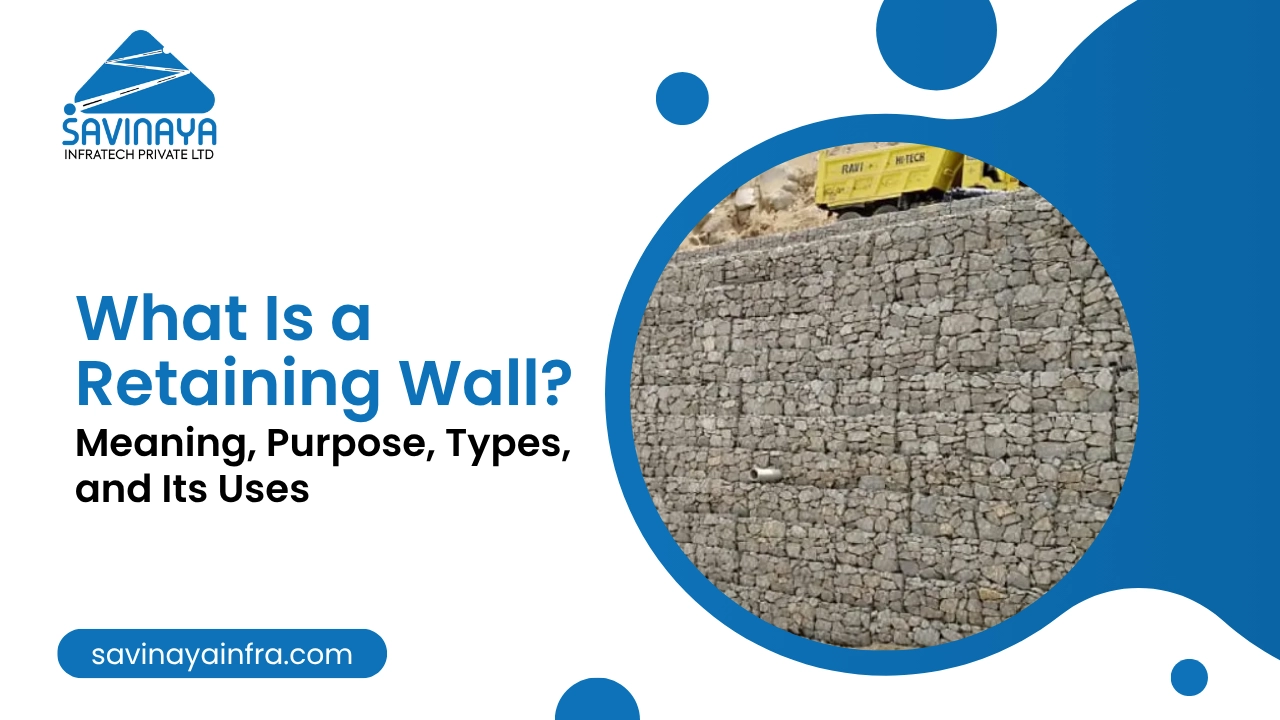In the construction industry, foundation challenges often arise due to poor soil conditions, restricted access, or structural instability. Traditional methods can be invasive, noisy, and ineffective in certain settings. That’s where micropiling presents a smarter alternative.
If you’ve ever wondered what micropiling is, this guide offers a detailed look into its process, benefits, and how experts like Savinaya Infratech can support your next project.
Table of Contents
What Is Micropiling?
At its core, micropiling is a deep foundation solution that uses small-diameter piles—typically 100mm to 300mm in size—drilled into the ground to transfer structural loads to deeper, stable soil layers or rock. These piles are reinforced with steel and injected with high-strength micropile grout, ensuring stability and long-term durability.
A micropiling foundation is ideal for areas with limited space, urban development, or where minimal disruption is preferred. Because the process involves less noise and vibration, it’s particularly suitable for working near existing buildings or in delicate environments.
Benefits of Micropiling
Using the micropiling technique offers a range of advantages:
- Low Vibration: The process reduces the risk of damage to nearby structures.
- High Load Capacity: Micropiles can handle heavy loads and provide serious strength where it’s needed most.
- Flexible Installation: Micropile drilling adapts to various site conditions, including confined areas.
- Efficient for Upgrades: Ideal for reinforcement or micropile underpinning of ageing or failing foundations.
The strength and adaptability of micropile construction make it a preferred choice for projects with demanding ground conditions.
Types of Micropiles
There are several types of micropiles, each designed to meet specific structural needs:
- Friction Micropiles: Use skin friction to distribute load through the shaft.
- End-Bearing Micropiles: Transfer load through the tip into solid rock or soil.
- Tension Micropiles: Handle uplift forces in areas with high winds or seismic activity.
The use of different types of micropiles allows engineers to address diverse load demands and soil conditions.
Micropile Construction Process
The micropile construction process involves:
1. Site Evaluation
Engineers perform testing to determine soil composition and structural needs.They do a complete site evaluation before starting the project.
2. Drilling
A borehole is created using micropile drilling equipment, which can penetrate through tough strata.
3. Reinforcement Placement
Steel rods or casings are inserted into the drilled holes so that it absorb heavy loads.
4. Grouting
Involves injecting high-strength micropile grout to securely bond the pile with the surrounding soil.
5. Curing and Testing
The pile is left to set and then tested for strength and stability. This method ensures a strong, long-lasting micropile foundation that can handle complex structural demands.
Micropile Installation and Drilling
Micropile installation is known for its flexibility and efficiency. Unlike traditional piles that require large rigs and generate significant disruption, micropiles can be installed with compact, mobile equipment. This makes them practical for jobs in tight or heavily developed spaces.
The micropile drilling process allows for both vertical and angled placement, providing tailored solutions for foundations that need enhanced load distribution or access in difficult environments.
Micropile Cost and Considerations
The micropile cost varies based on multiple factors:
- Site conditions
- Depth and diameter of the pile
- Materials used in reinforcement and grouting
- Access challenges
- Load-bearing requirements
Although the upfront cost is higher than that of shallow foundations, the long-term advantages, like less excavation, faster installation, and reliable performance, often make it a worthwhile investment. In many cases, the use of micropiling helps avoid expensive structural failures or delays. Want to know more about micropiling cost ,connect with us today.
How Savinaya Infratech Can Help With Your Micropiling Project?
Savinaya Infratech specialises in delivering expert micropile construction solutions tailored to each project’s unique needs. With a deep understanding of Indian soil conditions and structural requirements, the team offers:
- Customised micropile foundation designs for residential, commercial, and industrial projects
- Expertise in micropile installation, drilling, and grouting using advanced equipment
- Reliable timelines and cost transparency
- In-house engineering support to assess site-specific challenges
- Proven results in both new builds and foundation reinforcement
By collaborating with Savinaya Infratech- A soil nailing contractor- project owners gain access to experienced professionals who prioritize quality, safety, and long-term performance.
Tips To Choose A Reliable Micropile Contractor
Having the right micropile contractor on your team can make all the difference in getting the job done right. The right team brings valuable insights into design, construction, and testing. Look for these qualities in a contractor:
- Hands-on work in stabilising foundations using micropiles
- Worked with different micropile systems across various soil conditions
- Equipped with up-to-date tools for drilling and testing micropiles on-site
Working with a professional micropile contractor reduces risk and ensures the project stays on track technically and financially.
Conclusion
Now that you understand what is micropiling, its advantages, process, and applications, it’s easy to see why this technique is trusted for projects with complex foundation requirements. From supporting tall structures to reinforcing older ones, micropiling offers precision, power, and flexibility.
If you’re planning a construction or foundation improvement project, Savinaya Infratech is ready to support you with expert micro piling foundation solutions. Contact us to learn how we can enhance your projects.


